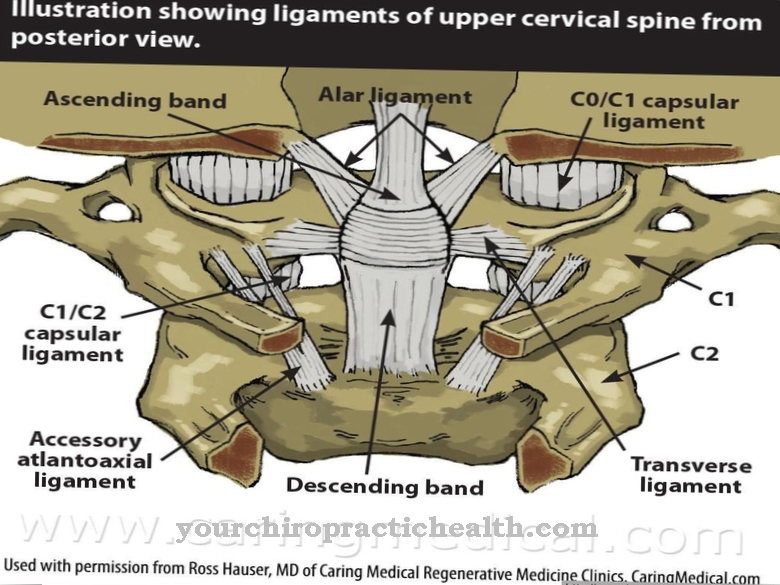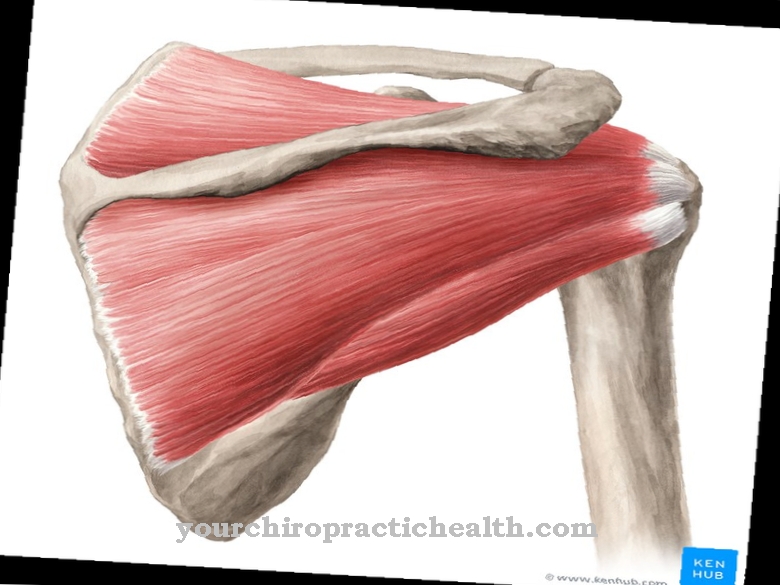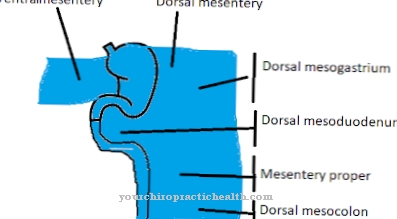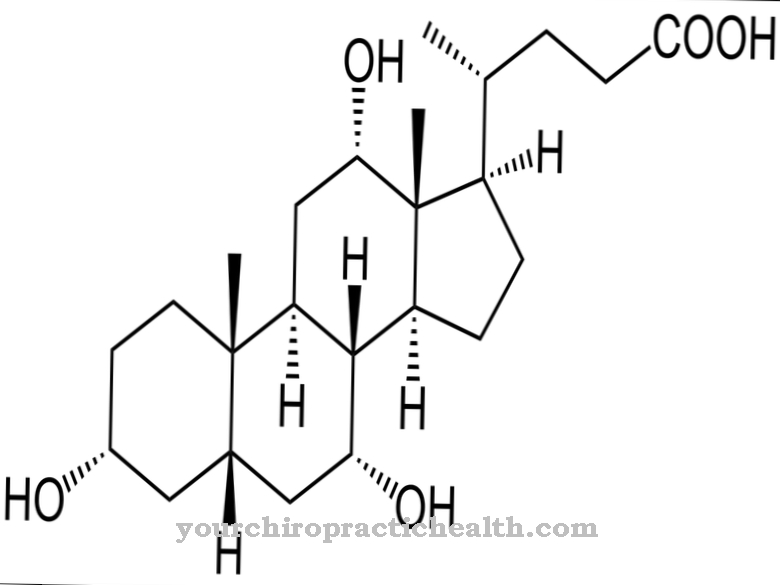Of the Truncus brachiocephalicus is a branch of the aorta on the right and supplies parts of the brain in addition to the neck and the right arm. Like any artery, the trunk carries blood that is rich in oxygen, nutrients and messengers. Vascular diseases such as atherosclerosis can affect the brachiocephalic trunk and require surgical intervention.
What is the brachiocephalic trunk?
The aorta is the central artery in every animal organism. The arterial vessel goes from the heart and transports oxygen-rich blood to the periphery of the body. More precisely, the exit of the aorta is on the left heart. The artery is separated from the organ by the so-called aortic valve.
The vessel arches over the trachea, where it shifts its direction dorsal-caudal. The aorta plays a central role for the entire body circulation. The main tasks of the vessel include the supply of nutrients, oxygen and messenger substances to the organs and tissues. Within the thoracic area, the aorta gives off the brachiocephalic trunk in addition to the coronary arteries, the left common carotid artery, the left subclavian artery and the intercostal arteries. This arterial vascular branch is one of the main branches originating from the aorta. The vascular branch is primarily responsible for the blood supply to the head area and in individual cases can itself have vascular branches.
Anatomy & structure
In many people, the brachiocephalic trunk lies on the right side of the body and does not occur on both sides. The vascular branch forms the common vascular trunk of the right-hand subclavian artery and the common carotid artery, which usually arise separately from the aortic arch on the left side of the human body.
From an anatomical point of view, the brachiocephalic trunk borders on different structures. On the anterior side, the vena brachiocephalica left together with the manubrium sterni form the boundary. The trachea and the vagus nerve lie at the posterior border of the trunk. Left behind, the brachiocephalic trunk borders the left common carotid artery, with the right brachiocephalic vein being discernible. The trunk does not give off its own arterial branches, but can send a small branch to the caudal side of the thyroid in the form of a variety. This possible branch is called the thyroid artery ima.
Function & tasks
Like all arterial branches, the brachiocephalic trunk carries oxygen-rich blood. This blood comes from the aorta, which is supplied with oxygen after passing through the lungs and the heart ventricles. The arterial blood is thus a transport medium.In the favorable pH environment of the lungs, the oxygen molecules bind to the hemoglobin within the arterial blood, and when the pH value changes, they are released again within the body periphery. In this way, in addition to free oxygen, bound oxygen can be transported with the blood and given to the individual organs and tissues of the body periphery.
Since oxygen is vital for every type of body tissue, arteries play a vital role as conduits for oxygen-rich blood in the human body. In addition to oxygen, arterial blood also carries nutrients and messenger substances. These transport tasks are also of vital value. Without nutrients, the individual tissues of the body's periphery perish just as much as without O2. In turn, messenger substances serve to control almost all physiological body processes. The signal substances bind to designated receptors within the peripheral target organs and trigger processes such as growth processes.
Like all other arteries, the brachiocephalic trunk transports oxygen-rich, nutrient-rich and messenger-carrying blood to individual body tissues and organs. The trunk supplies the right arm as well as the right side of the head, the right side of the neck and the right side of the brain. With the supply of oxygen, nutrients and messengers to one part of the brain, the arterial vascular branch is fundamentally involved in maintaining central control centers.
You can find your medication here
➔ Medicines against memory disorders and forgetfulnessDiseases
Arterial branches can be affected by various vascular diseases. In the western society of the 21st century, the prevalence of vascular and cardiovascular diseases is increasing rapidly. Of the Modern lifestyle harbors numerous risk factors that, for example, support chronic arterial occlusion.
Such occlusion processes on the subclavian artery or the brachiocephalic trunk usually correspond to arteriosclerotic origin. In arteriosclerosis, fat, connective tissue, calcium or thrombi are deposited within the blood vessels. The development of arteriosclerosis can be promoted by damage and dysfunction of the endothelium. In this way, LDL molecules can enter subendothelial layers and cause oxidative processes and inflammatory reactions. This is how the characteristic plaques or atheromas develop.
Since the brachiocephalic trunk partially supplies the brain, cerebral symptoms can occur depending on the location of an arteriosclerotic stenosis. The symptoms of this type are grouped under the term subclavian steal syndrome. Peripheral complaints in terms of arm claudication are also conceivable in the context of the appearance. Treatment in this case is usually surgical and requires procedures such as the bypass procedure or a transposition procedure. Percutaneous dilatations with stent implants have also been used in the recent past.
Vascular diseases are not the only context in which the brachiocephalic trunk can become pathologically relevant. Compression syndromes can also affect the arterial branch. In addition, a tracheotomy in the sense of a tracheal incision sometimes leads to lesions of the vessel and its branch varieties. Such lesions or injuries represent a life-threatening condition. Any bleeding of the brachiocephalic trunk is a life-threatening situation and must be discovered and stopped within a very short time in order to save the patient's life.

















.jpg)







.jpg)


